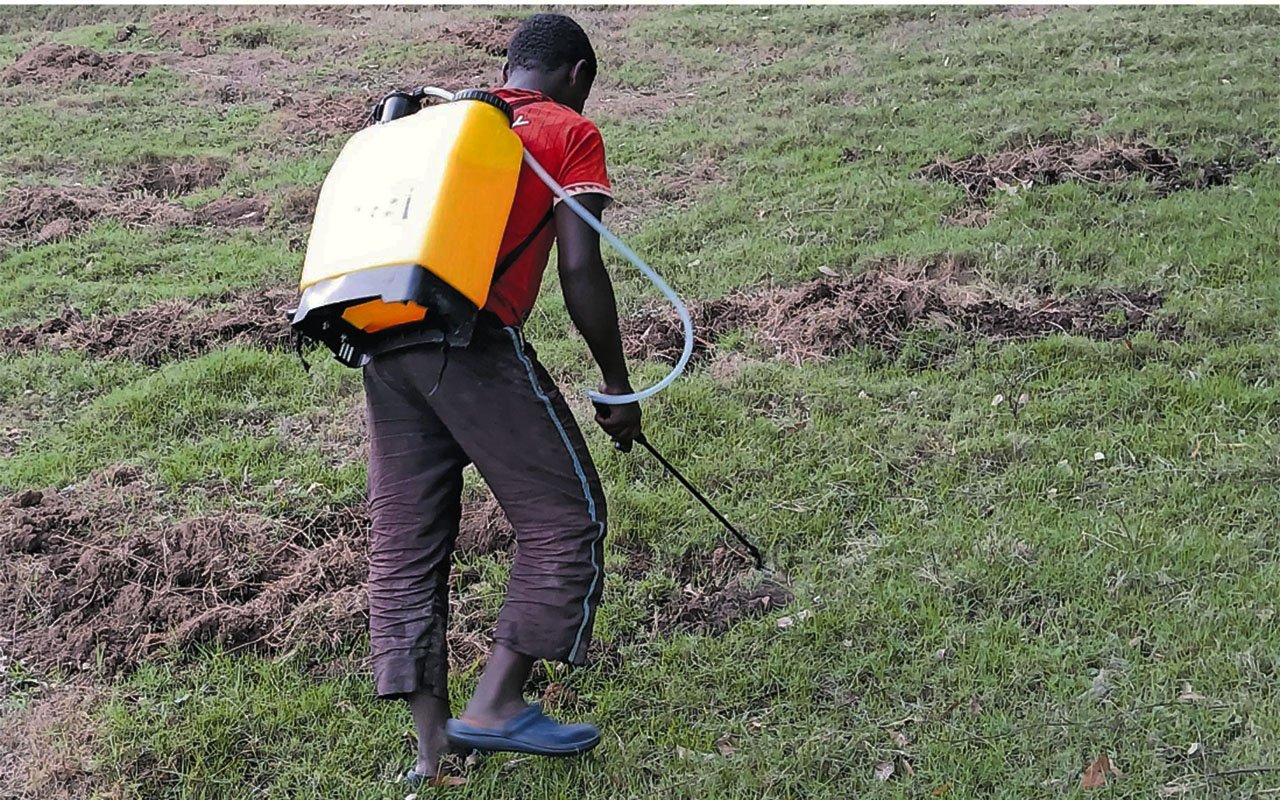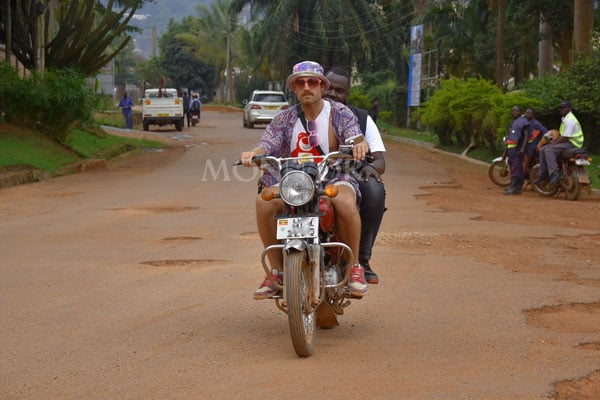Prime
Inside Uganda’s debt burden

Infrastructure. A section of the Entebbe expressway completed in March 2018. Some of the roads in Uganda have been constructed on borrowed money. PHOTO BY ALEX ESAGALA
What you need to know:
Initiative. Uganda’s total public debt stock stood at a staggering at Shs46 trillion at the end of June, representing a nominal percentage value of 42 per cent of GDP. As the government continues to display a ferocious borrowing appetite, there are fears that debt could plunge the country into a crisis, writes Frederic Musisi.
A confidential Auditor General’s report on public debt management, as at June 2018 government had incurred an additional Shs16 billion in interest to Stanbic Bank and Standard Chartered Bank on account of a debt swap arrangement for repayment of $1.4b (Shs5.1 trillion) loan from China’s EXIM Bank for construction of Karuma dam.
The $1.4b loan has an interest cost of libor, the benchmark interest rate at which major global banks lend to one another in the international interbank market, plus a premium of 3.5 per cent per annum for a period of 15 years.
The government, according to Mr John Muwanga’s report, entered into the swap arrangement to minimise the exposure of the floating interest rate. Under this arrangement, government pays a fixed interest rate of 2.58 per cent (0.79 plus a swap premium of 1.79) on its loan, allowing Stanbic and Stanchart to pay the floating interest, which is dependent on the LIBOR.
“This means that government will only benefit from this arrangement when LIBOR plus the agreed premium is higher than 2.58 per cent,” the audit.
A review of the interest movements of the LIBOR, according to the audit, showed “a positive movement” but government is yet to benefit from the financial arrangement. Since commencement, LIBOR has been lower than 2.58 per cent and as a result government has incurred additional costs.
In an article published by the Observer in July 2016, the Finance ministry spokesperson was quoted as describing the debt swap arrangement as “a milestone in government finances.”
“The implication of the interest swap is that as a country we now know for certain our total debt obligation in respect to the project and the related interest payable over the next 15 years as compared to the uncertainties that are caused by a floating interest,” Mr Jim Mugunga said.
Debt management
Policy workers in the ministry explained that libor is predicted to rise in the future and government will recover the money paid to the two banks as result of the debt swap, which the AG, John Muwanga, described as “speculative” because LIBOR has to go above 4 per cent for at least four years for government to realise any benefits.
“The government debt management policy on external debt does not give sufficient guidance on the use of instruments such as SWAPs in risk management. As a result, most products are market driven which exposes government to further risks,” Mr Muwanga said.
The director for debt and cash policy department in the Finance ministry, Mr Maurice Wanyera, likened the debt swap arrangement to hedging—an investment position intended to offset potential losses or gains that may be incurred by a companion investment—and said they are considering further experimenting it on more commercial loans.
While Finance said they are training staff in the department on how and when to use such instruments, Mr Muwanga advised that government should limit the reliance on blueprints “which are speculative” and a comprehensive policy to guide such should be put in place.
Devil in the detail
The debt swap arrangement is one of the several red flags raised in the audit relating to Uganda’s growing debt appetite and its associated side effects.
The Karuma loan, like several other Chinese loan projects have become a key talking point especially in light of the heavy conditions to them.
Some economists and the Auditor General John Muwanga have concluded that these conditions are stringent, while China itself is accused of trapping developing countries including Uganda in a vicious cycle of debt.
Some of the conditions include, the loans being tied to particular suppliers or contractors, which distorts local content and how much Uganda actually receives, payment of all legal fees without a cap and insurance premiums up to 7.4 per cent or Shs31 billion on behalf of the lender, and opening of needless escrow accounts which distorts governments cash flow.
Mr Muwanga’s audit details that Uganda was required by China’s EXIM Bank to open escrow accounts with Stanbic Bank where the government is obliged to deposit funds over the tenure of the loan to cover the high annual interest and fees under the agreement as a security in case a country defaults.
As of June last year, the escrow accounts for all major Exim Bank-funded projects including the expansion of Entebbe airport, Isimba and Karuma dams, National Infrastructure Backbone, and Kampala Entebbe Expressway, held more than Shs150 billion.
What this means, the audit noted is that, because government has no control over the escrow accounts and does not earn interest from these bank balances; it distorts the Treasury’s cash flows and monetary control policy.
The most stringent condition, perhaps, is the waiver of sovereign immunity over all its properties and itself from enforcement of any form of judgement. This means in the likely event of default or delay to pay, the lender has the right to take possession of the country’s assets of their liking to recoup their investments.
Ministry of Finance
Finance minister Matia Kasaija, early this year rebuffed claims that China could seek Uganda’s assets to serve as collateral for debt.
At a hastily called press conference to respond to revelations detailed in the Auditor General’s report to parliament on debt, Mr Kasaija said: “It is possible, I am talking about China taking over assets, they can do it elsewhere but here I don’t think they can.”
Later, Mr Kasaija wrote to President Museveni raising a concern about conditions tied to China’s loans warning that: “Given what is happening in our peer countries as regards to China debt, we strongly believe we should protect our assets from possible takeover.”
Uganda’s total public debt stock, according to the recently released Bank of Uganda state of economy report, stood at a staggering Shs47 trillion or 43.2 per cent as the nominal value of the size of the economy as at June this year.
Of the entire total debt stock, ministry of Finance records shows, $4.2b (Shs15.4 trillion) is domestic debt and $8.3b (Shs30 trillion) is external debt.
By the end of this financial year next June, according to the ministry’s forecasts, the nominal value of debt as a percentage of the size of the economy is expected to soar to 47 per cent on account of 20 loans due for approval, and subsequently clock 50 per cent in the financial year 2021/2022.
The commissioner for debt policy and issuance department in the ministry, Godfrey Dhatemwa, explained that while Uganda has little headroom to hit the 50 per cent threshold set by East African countries to contain borrowing, the country’s debt position is not worrying as such.
“Yes, it (debt) has risen than it was two or three years ago on account of flagship infrastructure projects our forecasts show we can still manage it if we do what is right,” Mr Dhatemwa said.
Red flags warning
China ranks as Uganda’s top bilateral lender with about 75 per cent, followed by France, the UK, which is financing construction of the Kabaale International Airport in Hoima, and Japan, which financed the new Jinja cable bridge and when combined account for 25 per cent.
The increment in Uganda’s debt stock is attributed to disbursements from China’s EXIM Bank on account of financing Karuma and Isimba dams, and World Bank loans, as well as foreign exchange rate variations.
In general, the debt stock is largely from multilateral lenders such as the World Bank and African Development Fund.
So why is China’s debt the most worrying? Mr Dhatemwa postulates that: “Even when we have multilaterals lend us more money, we still have to venture out for alternatives to finance infrastructure development in line with our aspirations in the National Development Plan.”
Out of the total external debt stock there is a loan portfolio of $4.2b (Shs15 trillion) that remains unabsorbed, largely from World Bank, which government blames on challenges such as procurement and land compensation.
The World Bank on the other hand attributes the poor absorption of its credit to the slow pace of implementation of reforms by government either out of lack of appetite or lack of political will.
Foreign exchange fluctuations have also increased the debt by Shs2 trillion as at June last year up from 820 billion shillings in 2017. The debt audit shows that government does not have a clear strategy that would protect the country against foreign exchange risks as a result of debt dominated in foreign currency.
According to the International Monetary Fund, Uganda remains at low risk of debt distress, even though debt metrics have deteriorated and one in five Ugandan shillings collected in revenue will be spent on interest in this financial year.
The IMF, in its May assessment, detailed that Uganda’s debt carrying capacity has been raised to strong from medium. Uganda’s heavy borrowing was premised on assumption that infrastructure investments yield the envisaged growth dividend; revenue collection improves by 0.5 per cent of GDP per year over the next five years; oil exports commence in 2023; and infrastructure investment is reduced once the current projects are completed. But the stark reality does not match expectations.
Mr Dhatemwa said the country has started realising some dividends on account of infrastructure development such as propelling the 6 per cent growth rate.
The ongoing strife between government and oil companies pushed back oil production and the earliest this could commence is 2025 while the infrastructure projects may not generate the envisaged return.
However, in the short and medium term, interest payments continue to rise.
For example, the country dropped five places in the 2019 World Bank Ease of Doing Business index, from the 122th place last year to 127th in 2019.
Intriguingly, Uganda was ranked the worst in the getting electricity index at 175 scoring 34 per cent, a decrease from 2017 where it scored 34.1 per cent, in spite of the current power surplus.
Later this year, when the 600MW Karuma dam is completed, Uganda’s national electricity grid will have the capacity of 1,782 megawatts, against an average demand of 500MW.
In September, President Museveni issued a new directive on borrowing for infrastructure, limiting borrowing for only railway construction, electricity generation and irrigation schemes, strategic road projects for oil and tourism, and key aspects of the education and health sector.
Later, the President, contradicted himself by scuttling procurement for the proposed Shs4 trillion Kampala-Jinja Expressway which was conceived as Public Private Partnership venture, by inviting a Chinese company to bid for the project.
The Chinese company, China Railway 17th Bureau Group Company, told the President that it will use its money to construct the road and recoup its investments in 30 years.
This, as government starts servicing the Shs1.2 trillion debt from China which was acquired to construct the Kampala-Entebbe Expressway on the premise that the loan would be financed through toll gate fee collections, which has not materialised yet.
The Ministry of Finance policy documents detail that Uganda expects the first tranche of the Shs8.1 trillion loan from China to finance construction of the first leg of the Standard Gauge Railway in the financial year 2021/2022.
Mr Julius Kapwepwe, the programmes coordinator at Uganda Debt Network, told Daily Monitor that government is not transparent about its debt undertakings.
“There is still a lot of wasteful expenditure, so no matter how they try to improve, it defeats the purpose,” Mr Kapwepwe said.
“There is another aspect of debt that government needs to take interest in; corporate debt, a number of companies that used to pay taxes but are suffering which frustrates revenue mobilisation.”




